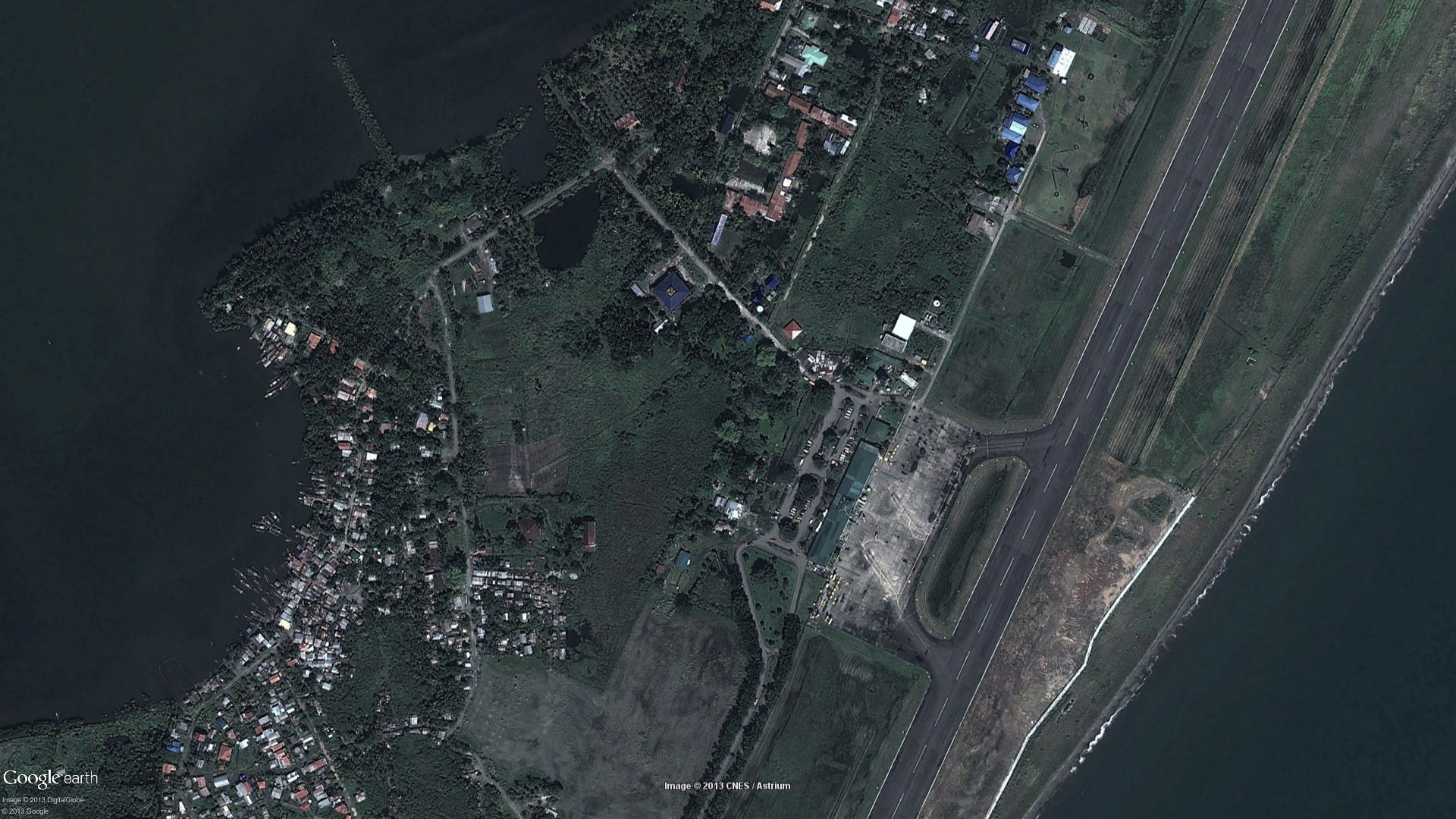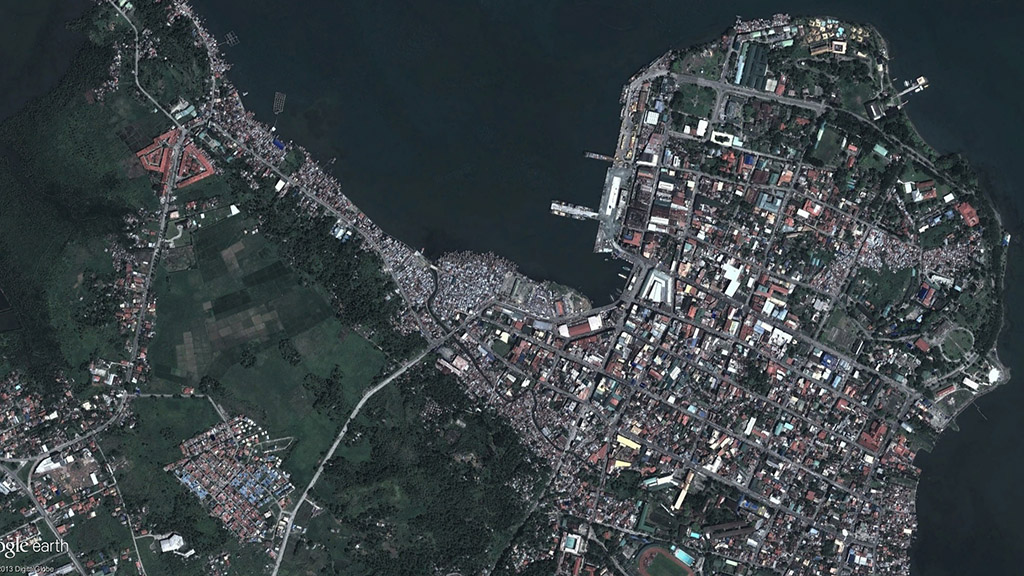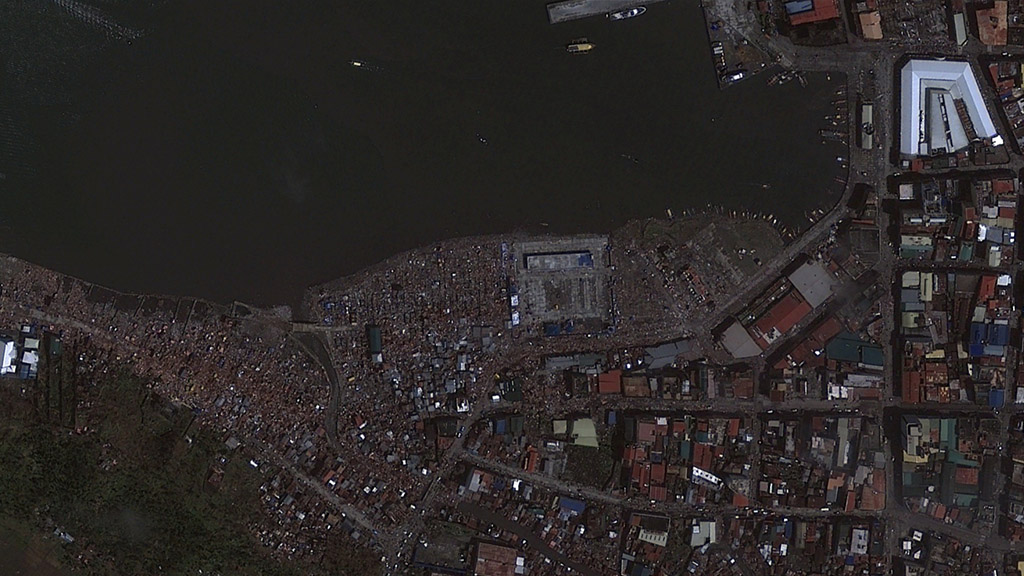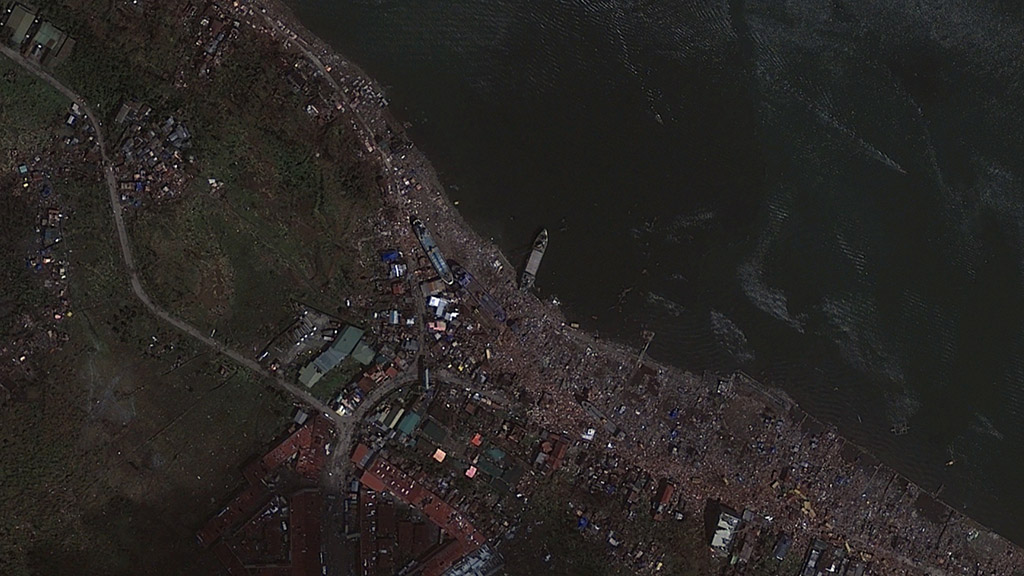Filtered By: Scitech
SciTech
Interactive Map: A year after Yolanda, Tacloban is still a patchwork of makeshift structures
By TJ Dimacali and Jessica Bartolome, GMA News
November 8, 2014, marks the first year anniversary of the day that Super Typhoon Yolanda (Haiyan) barreled through central Philippines, leaving some 6,000 people dead and P35.5 billion worth of damage in its wake.
Google Philippines was able to provide GMA News Online its latest available satellite image (as of presstime) of Tacloban, taken in April 2014, clearly showing the patchwork of temporary shelters and makeshift structures that were erected in the few short months since the disaster.
Roll the slider to the right to compare the image with photos of select areas taken in November 2013, mere days after Yolanda:


Yet, as recently as November 4, it had been estimated that fewer than 100 of 14,500 promised permanent homes had been built and that thousands were still living in danger zones.
"Building more permanent homes is very slow and takes time. Hopefully, by January next year, the pace will pick up," Mayor Alfred Romualdez, nephew of former First Lady Imelda Marcos, told reporters.
He blamed the lack of suitable land where houses which could withstand 250-kph (155-mph) winds could be built but said he hoped the 14,500 homes would be completed by 2017.
"There are still 3,000 people in danger zones, many in tents and we want them all transferred to transitional shelters by next month," Romualdez said.
"...One year after typhoon Haiyan, we are back but only about 50 percent," he said, saying the recovery effort was slowed down by bureaucracy, shortage of manpower and resources and other delays.
Construction materials, like galvanized iron sheets, were also scarce, he said, forcing people to use fallen coconut trees to build temporary shelters.
Romualdez did not mention graft as a factor in one of Asia's most corrupt countries.
The Philippines came in at 94 out of 175 countries in Transparency International's corruption perceptions index last year.
The Aquino government has a six-year 170 billion pesos ($3.80 billion) master plan to rebuild devastated areas, building about 200,000 homes and providing more sustainable jobs for 2.6 million people who living below the poverty line.
Remembering the aftermath
Yolanda made its first hit in the Philippines in the early morning of November 8, 2013. With an average wind speed of 314 kph, it is the strongest typhoon to ever make landfall in recorded history.
Such was its strength and speed that it took weeks for the full extent of damage to be ascertained, and even longer for the death toll to be officially tallied.
And yet, as the following images—taken just days after Yolanda barreled through Leyte—show, the destruction could clearly be seen even from hundreds of kilometers away in the sky.
Where once were green fields and clear blue waves, only muddy plains and brackish waters remained. Landmarks were decimated, and even the courses of once-mighty rivers were changed.
Below, a scarred and battered Earth:
Remembering the aftermath
Yolanda made its first hit in the Philippines in the early morning of November 8, 2013. With an average wind speed of 314 kph, it is the strongest typhoon to ever make landfall in recorded history.
Such was its strength and speed that it took weeks for the full extent of damage to be ascertained, and even longer for the death toll to be officially tallied.
And yet, as the following images—taken just days after Yolanda barreled through Leyte—show, the destruction could clearly be seen even from hundreds of kilometers away in the sky.
Where once were green fields and clear blue waves, only muddy plains and brackish waters remained. Landmarks were decimated, and even the courses of once-mighty rivers were changed.
Below, a scarred and battered Earth:
Dulag municipality and Daguitan River


Barangay 86


Daniel Z. Romualdez (Tacloban) Airport


(L to R) Barangay 37, 1 and 4, and 25


Barangay 37


Barangay 69






— JST, GMA News
More Videos
Most Popular




